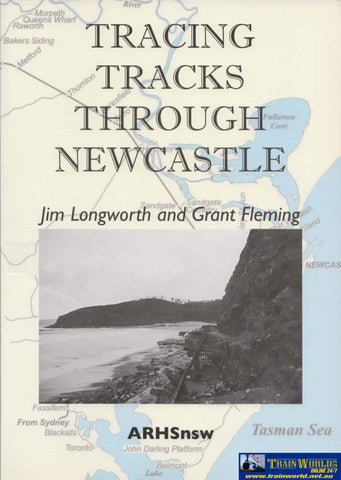Tracing Tracks Through Newcastle (AANS-047)
Product No.: AANS-047
Title: Tracing Tracks Through Newcastle
Author(s): Longworth, Jim & Fleming, Grant
Illustrator(s): N/A
Publisher: A.R.H.S (NSW Division)
ISBN: 9780987340832
Condition: New
Binding: Softcover
Dust Jacket: None
Edition: 1st Edition
Publication Year: 2017
Features: 184 Pages with Colour & Black/White Photos plus Line Drawings.
Welcome to the fascinating world of exploring the archaeology of Newcastle's once extensive government railway, coal railway, and urban street tramway systems. Archaeology may generally be seen as excavating holes in the surface of the earth to discover ancient relics. However, archaeology can also include studying standing structures (e.g., Davies 1987; NZHPT 2006) and visible imprints in the landscape. This book is intended to introduce the sorts of archaeological traces that can be seen today, without the need to excavate.
It is not intended to be a detailed history of the railway or tramway networks of Newcastle or of any particular line. These have been addressed in other publications, some of which are referenced in each chapter. While constructing a new railway or tramway always introduces new materials and forms into our environment; railway or tramway closure rarely removes all traces from the landscape. Despite some having been closed many decades ago there are still a surprisingly large number of archaeological traces to be seen today.
The term 'archaeological traces' is used herein to include remains and/or imprints. 'Remains' means tangible physical material artefacts. 'Imprints' means resultant features in the landscape, sometimes this can include the shape of a space that has been cast by its railway or tramway origin, though no material railway or tramway remains remain.
The region addressed herein is bounded roughly by the Hunter River in the north, Maitland in the west, and the Fassifern-Toronto railway line in the south. Chapters start at the East Maitland railway station and proceed in a clockwise direction around the region. Tramways have been kept together in two discrete chapters as befitting their technological differentiation from railways. Having explored these networks the book draws some theoretical conclusions about how railways became included in our archaeological record



